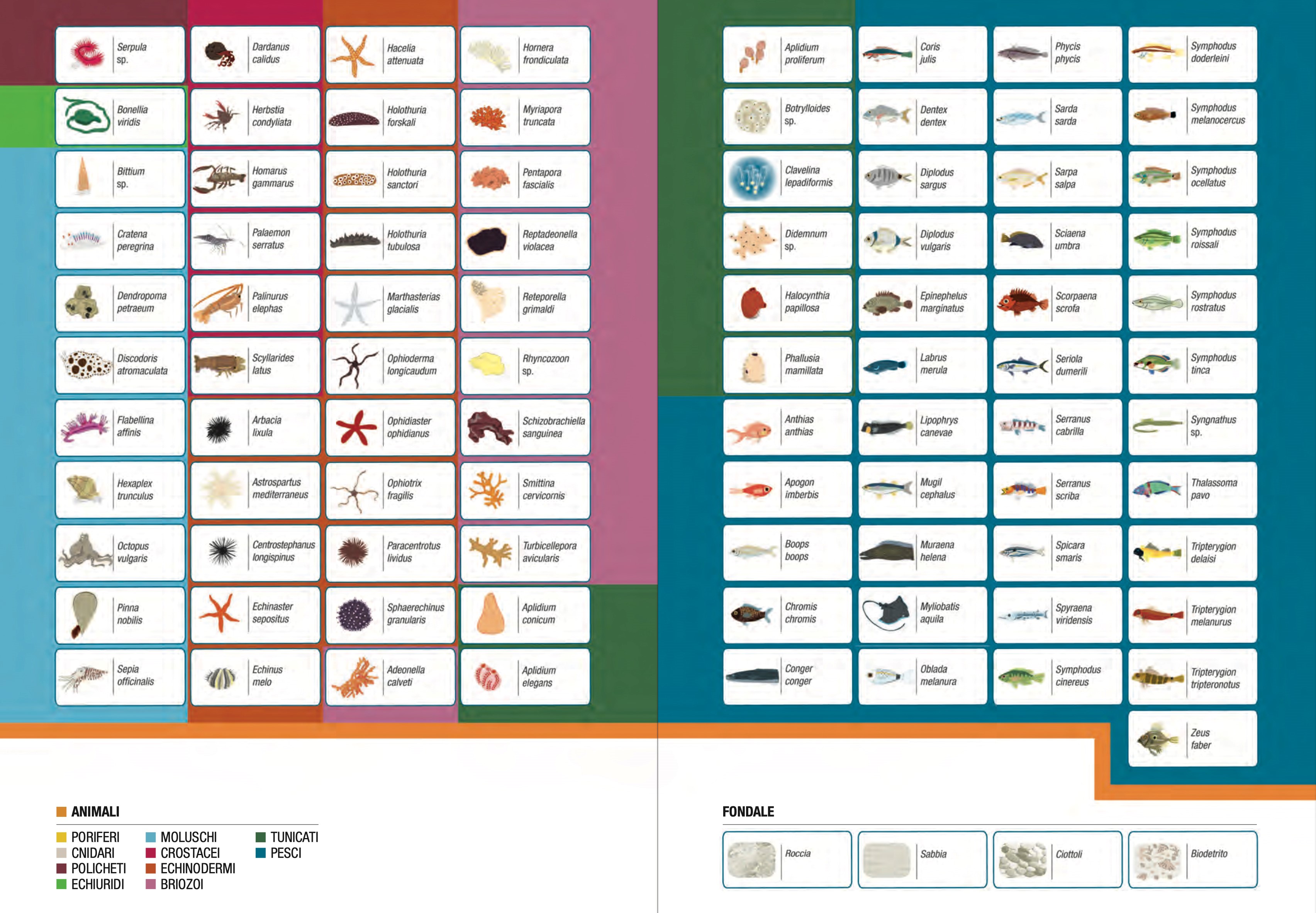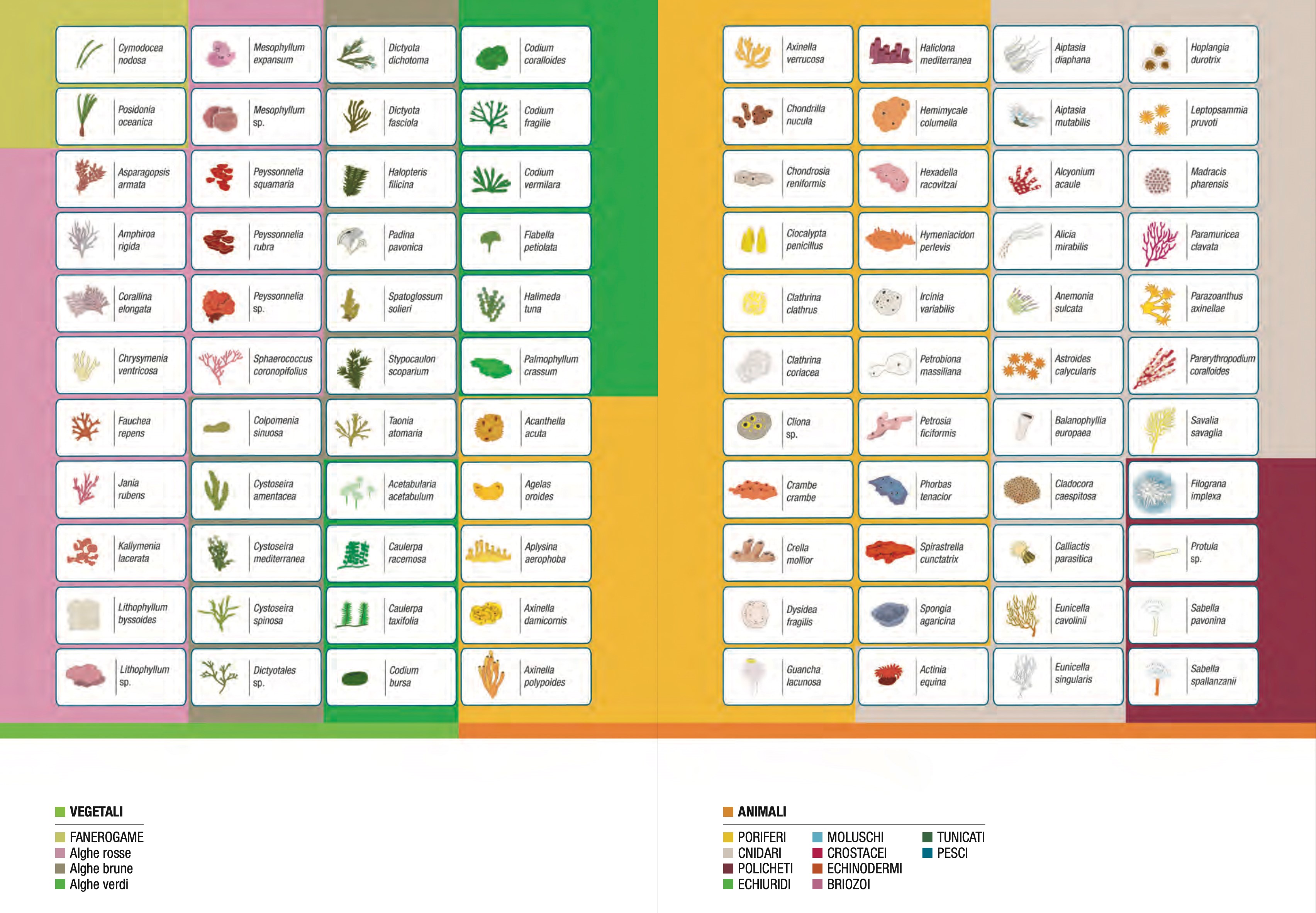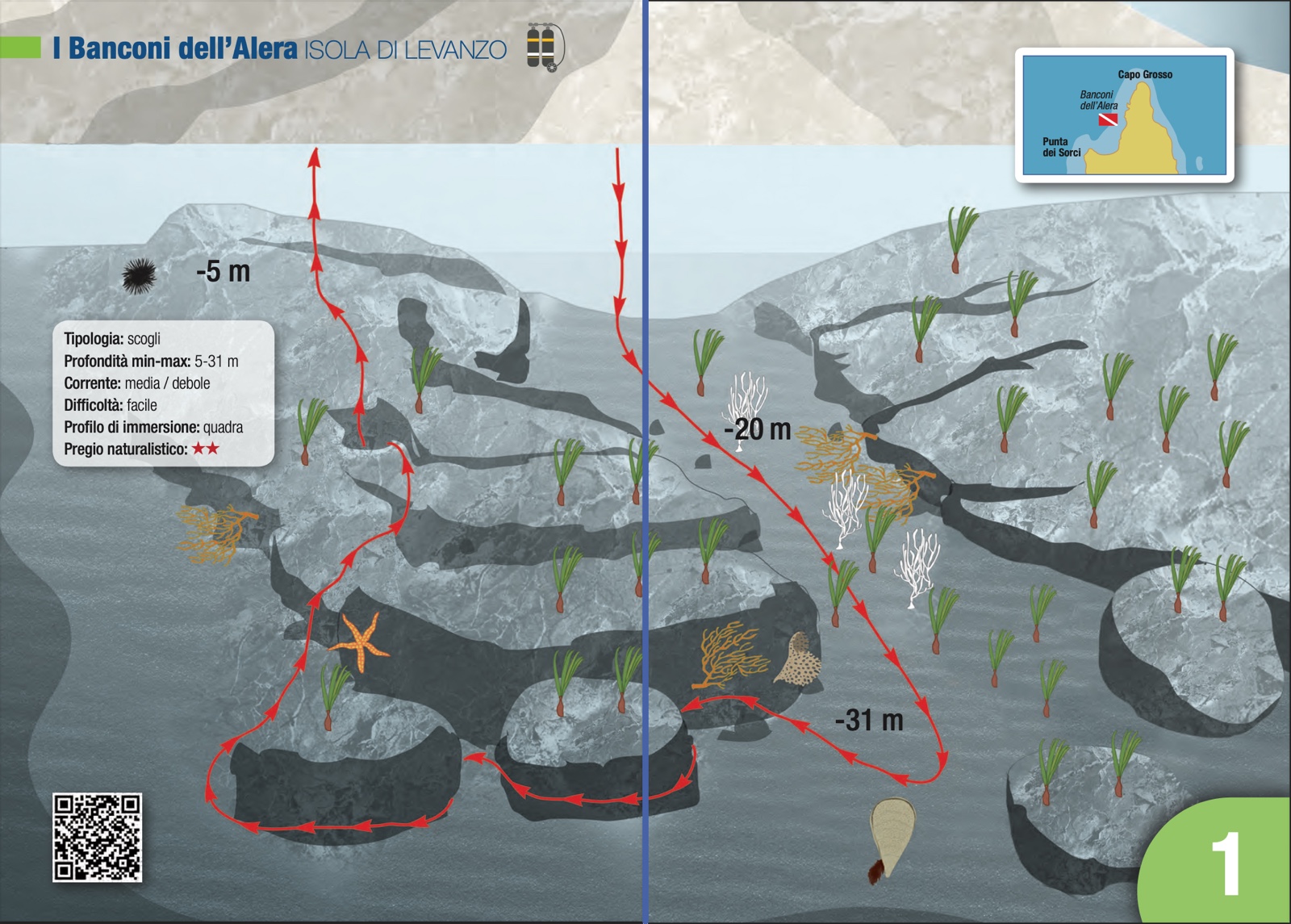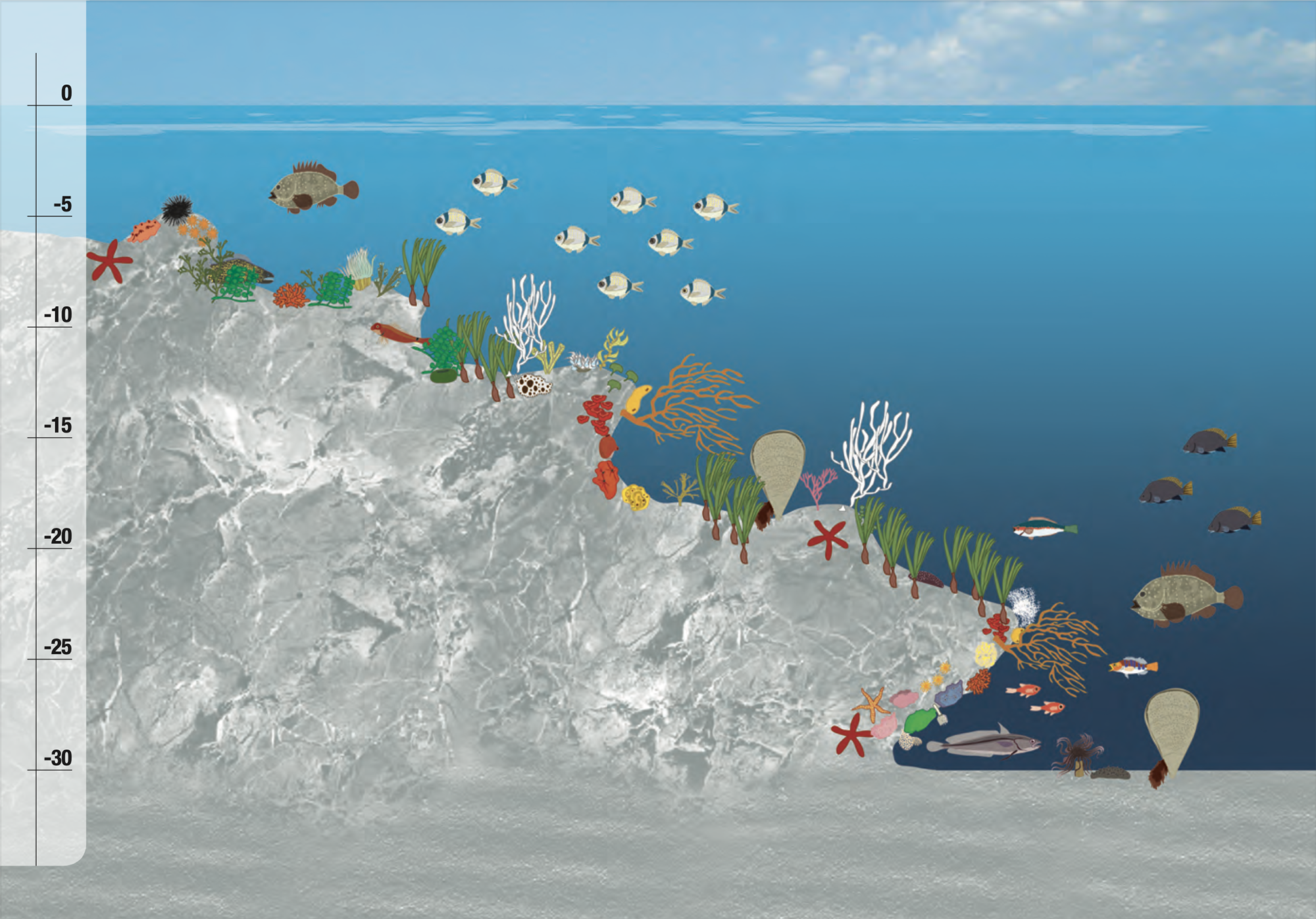Site 1 - I Banconi dell'Alera
The descent, at about 5 m, leads to a rocky seabed with a stepped morphology where the algal cover is extensive (Codium bursa, Dictyota dichotoma, Padina pavonica, Caulerpa racemosa, Halimeda tuna, Dictyopteris membranacea) and interspersed with islands of Posidonia oceanica. The path continues on a medium sloping seabed along wide rocky corridors on whose walls one can distinguish the yellow gorgonian Eunicella cavolinii, the bryozoan known as 'false coral' (Myriapora truncata), the orange madrepore Astroides calycularis, and algae (Sphaerococcus coronopifolius, Flabellia petiolata, Sargassum vulgare). Among the algae, on the sub-horizontal portions of rock, the two actinias Aiptasia diaphana and Anemonia viridis can be seen. Encounters with banded seabreams (Diplodus vulgaris), brown grouper (Epinephelus marginatus) and red scorpion fish (Scorpaena scrofa), white scorpion fish (Parablennius rouxi), and red scorpion fish (Tripterygion melanurus) are frequent. At about 18 m, a small channel has abundant colonies of the white gorgonian E. singularis in the sub-horizontal rocky portions amidst islands of Posidonia. Frequent is the network of Caulerpa racemosa among which the red star Ophidiaster ophidianus, the algae Sargassum vulgare and Dictyopteris membranaceus stand out. Deeper, the channel walls are enriched with sponges such as Agelas oroides, Phorbas tenacior, Spirastrella cunctatrix, Axinella damicornis and Clathrina clathrus. The channel then leads to a wide amphitheatre at 31 m, where, on a sandy bottom, one can observe the cerianthus Cerianthus membranaceus, the Pinna nobilis, the star Hacelia attenuata and the Holoturia tubulosa. The rocky walls of the amphitheatre and the crevices are home to the bryozoan Reteporella grimaldii, the ascidian Clavelina nana, polychaete tubes (Filograna implexa), Protula sp., pink spots of the sponge Hexadella racovitzai, encrusting algae (Lithophyllum sp.). Mullet kings (Apogon imberbis) swim among them. Large specimens of brown grouper (E. marginatus), mostella (Phycis phycis) and corvina (Sciaena umbra) can be found in the deeper clefts, while bream (D. vulgaris) swim in midwater.
Legenda:


-
Information
-
Contacts

